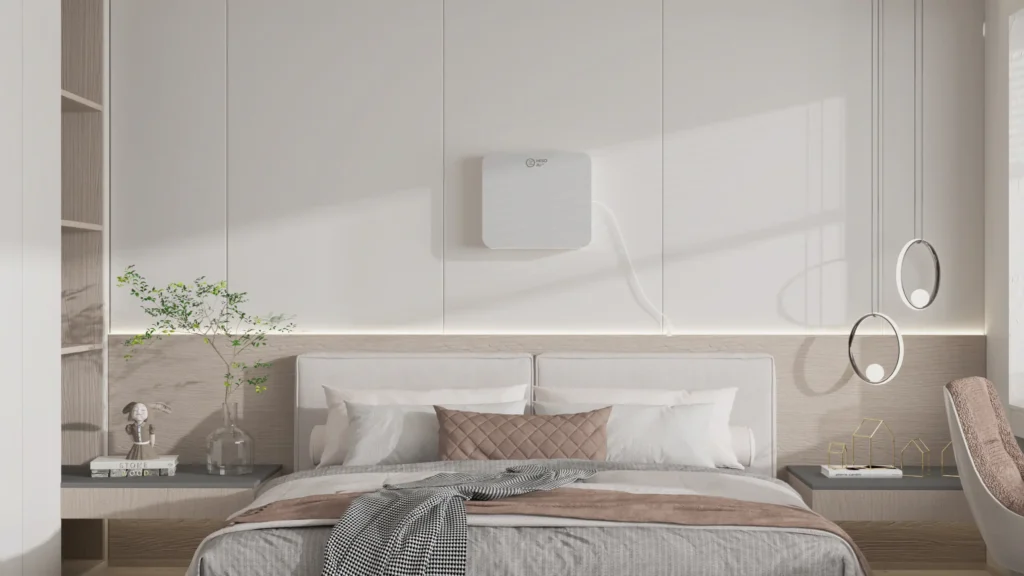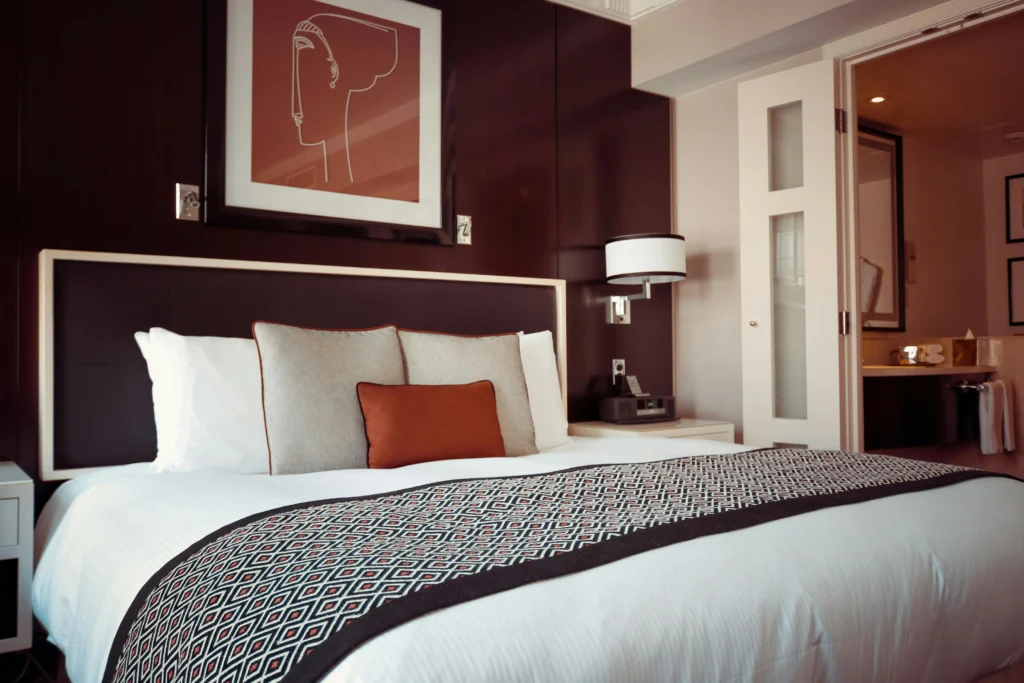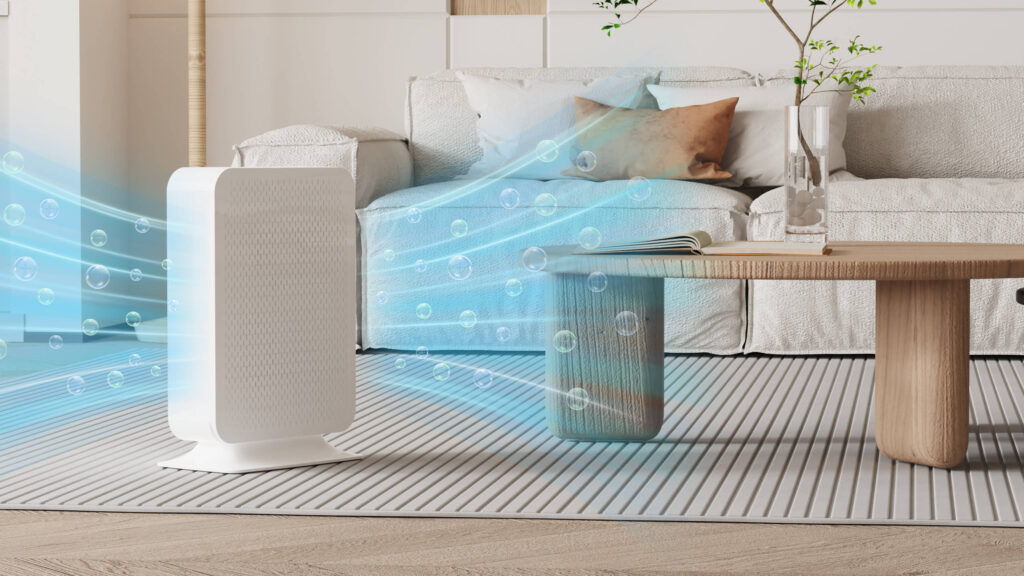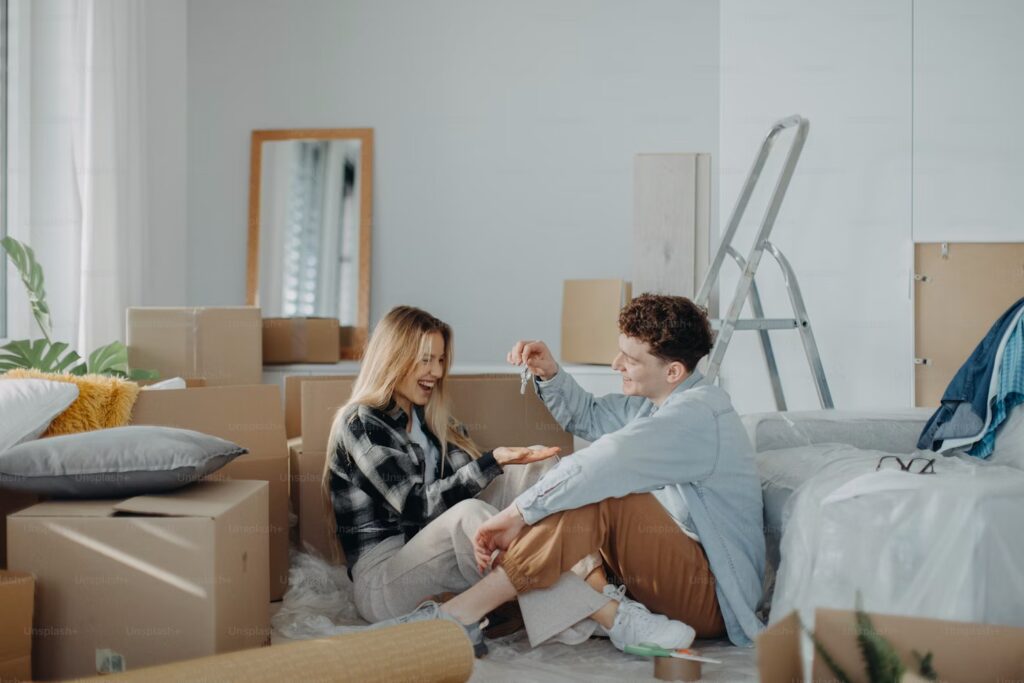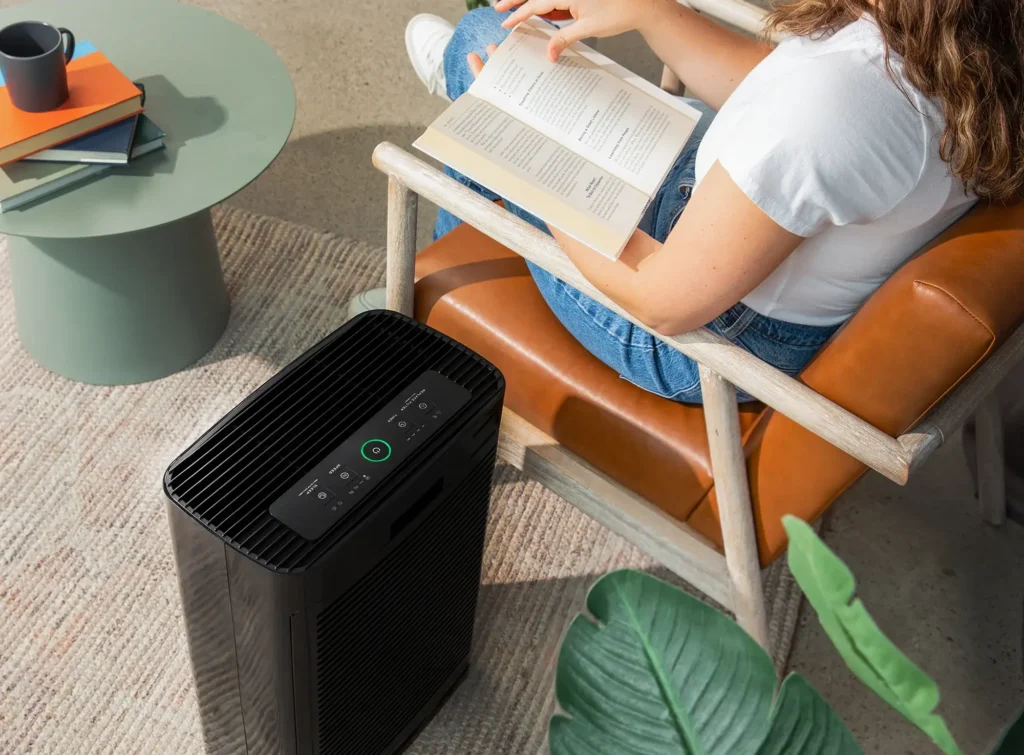Don't you know that you can still optimize the performance of your already-great air purifier? Read on to learn how to do this!
An air purifier is designed to capture different airborne pollutants. Things like allergens, dust, dirt, and floating debris are among the things that these air purifiers work with.
High-quality air purifiers, such as those manufactured by HisoAir, can do more than just that. They can also purify disease-causing pathogens, volatile organic compounds, and other harmful gaseous compounds.
The mechanism of these air purifiers is pretty much straightforward. But it is essential that you can understand how these devices work to ensure that you can optimize their performance and utilize them properly.
What Does an Air Purifier Help With?

Image Source: iStockphoto
Before we elaborate on the process of how to use an air purifier, it is essential that you understand what these air purifiers are for.
Technically speaking, the purpose of these air purifiers is to capture a plethora of contaminants in the air. Contrary to popular belief, these air purifiers don't kill or neutralize these airborne particles. Of course, the exemption here is when we are talking about pathogens (ie, bacteria and viruses), and the air purifier in interest has a UV light .
Generally speaking, filter-based air purifiers help in the improvement of indoor air quality. They are commonly used in houses. But there are also air purifiers that work for commercial and industrial applications.
The filters of these air purifiers capture different types of substances and particles that can pollute the air you breathe. These pollutants may include dirt, dust, and allergens that cause seasonal allergies (ie, pollen).
As we have mentioned, some air purifiers are also efficient in removing gaseous chemicals and substances that irritate the pulmonary system. In many cases, air purifiers are also used to remove pungent odor. Since air purifiers are also comparable to vacuums, expect that these devices can also remove debris and pet hair.
What Does an Air Purifier Do for Your Home?
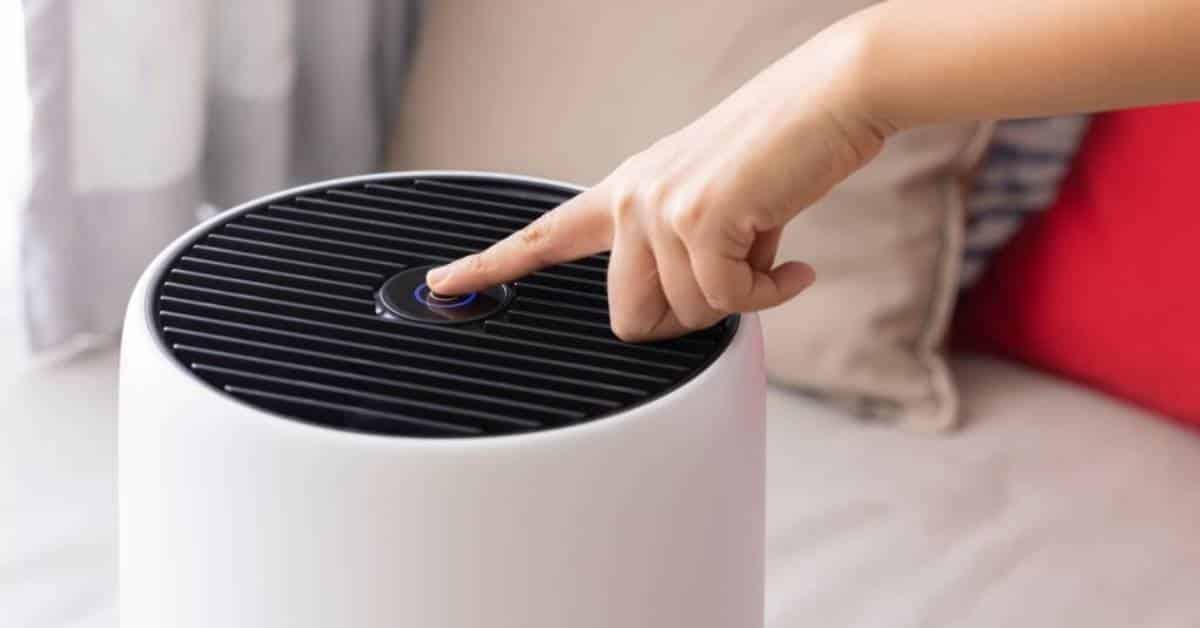
Image Source: iStockphoto
These days, air purifiers are commonly used for residential applications. The advent of COVID-19 and its aftermath made people realize that breathing clean, safe air is essential.
An air purifier is designed to keep your indoor space free from pollutants and other airborne threats. You may not know it, but your home is quite susceptible to both outdoor and indoor sources of air pollutants. In your home, you have chemicals and residues from susceptible cosmetics, paints, cleaning products, and other household amenities. Outside, there are dirt, combustion, and viruses that can easily breach your living spaces.
Ordinary cleaning methods--such as vacuuming, wiping, and brushing--will never be able to remove these contaminants. And that's something that you always need to take into account if you are undecided about these air purifiers. Air purifiers can remove airborne contaminants that other devices can't.
An air purifier is a great investment if you are worried about your indoor air quality. If you or your household are susceptible to allergies and respiratory illnesses, these devices are worth taking in.
When to Use an Air Purifier?
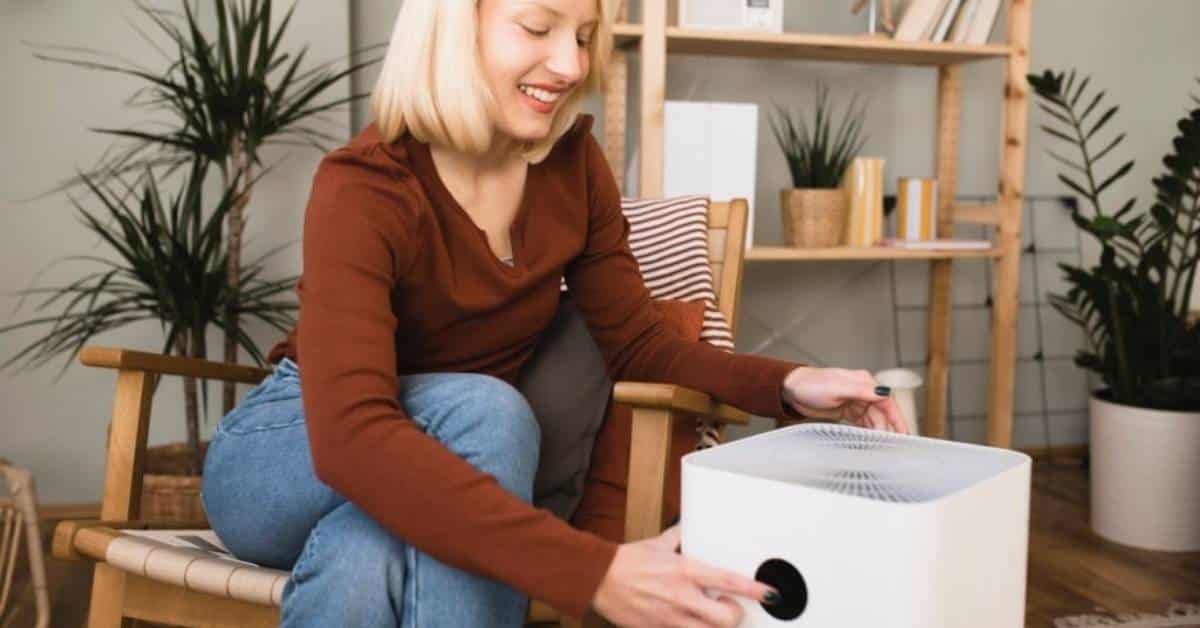
Image Source: iStockphoto
All the time. That's the short answer to this question.
But allow us to expound on this. Air purifiers are designed to work continuously. Hence, even if you keep them running non-stop, there shouldn't be a problem.
- Homeowners are encouraged to use their air purifiers regularly if their homes are prone to indoor air pollution. For example, if your residence is within an urban setting , it is likely that outdoor pollutants can enter your home. Even homes in suburban locations are already suffering such a problem.
- You should use an air purifier when there's a construction or renovation project on your property. Things like building dust, paint, and debris can also pollute your air. Running an air purifier would keep these residues controlled and moderated.
- If you have a baby in your house, it would be best that there's an air purifier in their bedrooms. In this way, they will not breathe harmful contaminants that can trigger asthma and other forms of allergies. Keep the air purifier running so that they remain safe at all times.
- If you are leaving your home, you may opt not to use the air purifier, especially if you are worried about your power bills. But since most air purifiers are energy-efficient , you should still keep these air purifiers to maintain the cleanliness of your indoor air.
- Air purifiers have timer functions. If you are sleeping, you can use this function and set the device on its lowest fan speed setting. In this way, you'll breathe clean air without being disturbed by unnecessary noises.
How Often Should You Use an Air Purifier?
In line with the discussion above, the frequency of using an air purifier may also depend on the current needs of your indoor space. It would really be great if you could use them regularly. In this way, you don't have to bother with this question anymore.
But what if you don't really want to use the air purifier continuously? How often should you just use it?
- Well, the answer may lie in your demand. In allergy seasons, air purifiers should constantly be running. You don't want those pollen and other allergens to trigger your asthma and allergies.
- During the normal season--when there are no apparent threats--you can use the air purifier twice a day. You can use it during the morning and the evening. These are the times when people are usually present. As long as there are people inside your living spaces, an air purifier should constantly be running.
- If there are no people inside your home, you are free to shut the air cleaner--just like what we said earlier. You can do this, especially if there are no gaps and seams in your home where outdoor pollutants can enter. However, if there are certain threats, such as dust mites in your bedroom and mold problems in your basement, a running air purifier should be present in those areas. If you have a whole-house air purifier, that's better.
The bottom line here is that you should use an air purifier when there's a need. If pollutants tend to enter your home, then you should use your air purifiers frequently.
Which Way Should an Air Purifier Face?
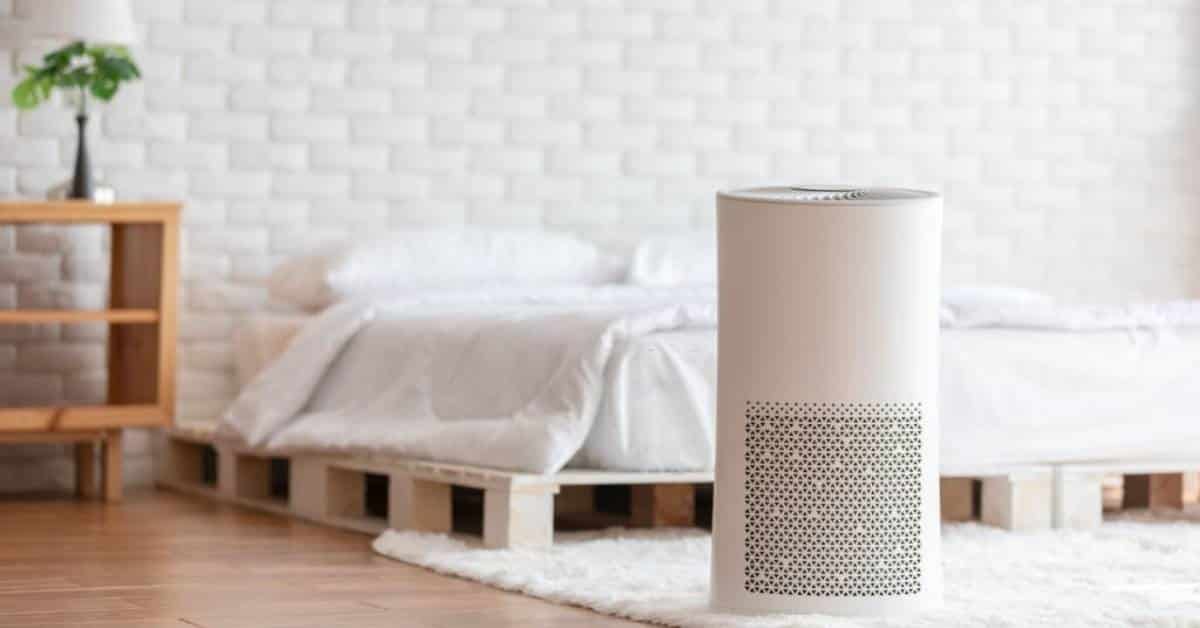
Image Source: iStockphoto
The air purifier should face in a direction where there are no physical obstructions. Assuming that we can't see these airborne contaminants, the best thing that we can do is to ensure that the air purifier is unobstructed.
Air purifiers should be placed in a spot where their air intake won't be blocked by things like furniture. At the very least, you should provide three to four feet of space on all the sides of the air purifier. In this way, it can absorb and distribute air properly.
Don't put the air purifier against the wall directly. It would limit its airflow, preventing it from capturing pollutants efficiently.
If the air purifier has multiple air intakes, you don't have to worry about this matter. It means that it can absorb and distribute the air in multiple directions.
If you can identify the source of pollution, face the air purifier in that direction. That should help in controlling the spread and proliferation of airborne contaminants.
How to Use an Air Purifier Effectively? (A Full FAQ List Explained)
There are numerous ways to operate an air purifier based on its manufacturer. In this blog, we’ll focus more on how to use an air purifier to get the most out of it.
These 6 pro tips will surely help you save more on the bills, prolong your appliance’s lifetime and maximize its air cleaning power.

HEPA air purifiers remove 99.7% of airborne contaminants, as well as germs and bacteria circulating in your household. Hence, you can expect long term and short term health benefits from investing in a high performance air purifier. Aside from helping you sleep better, keep your lungs healthier and neutralize foul odors, it also helps prevent airborne diseases.
Of course, with these premium benefits we can get from an air purifier, we’d also like this machine to last its lifetime.
Here are some common questions on how to use an air purifier and how to act on it.
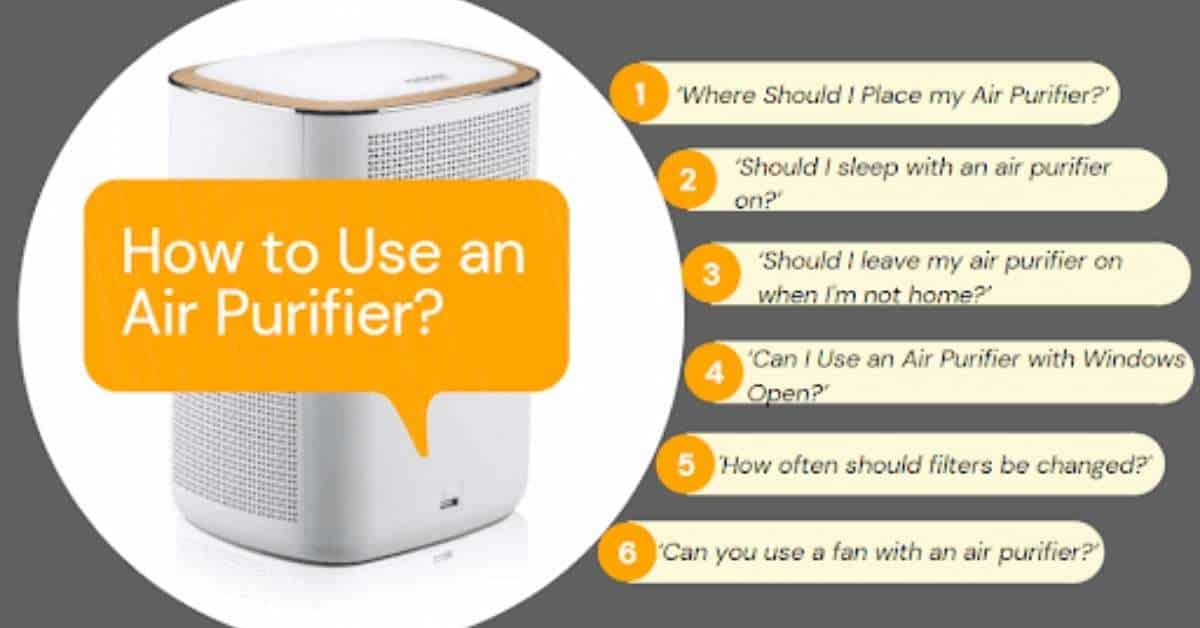
#1. Q:‘Where Should I Place my Air Purifier?’ - Place it at the source of pollution, away from corners
Place your newly bought air purifier where its top side and four sides will not be obstructed with any walls or objects.
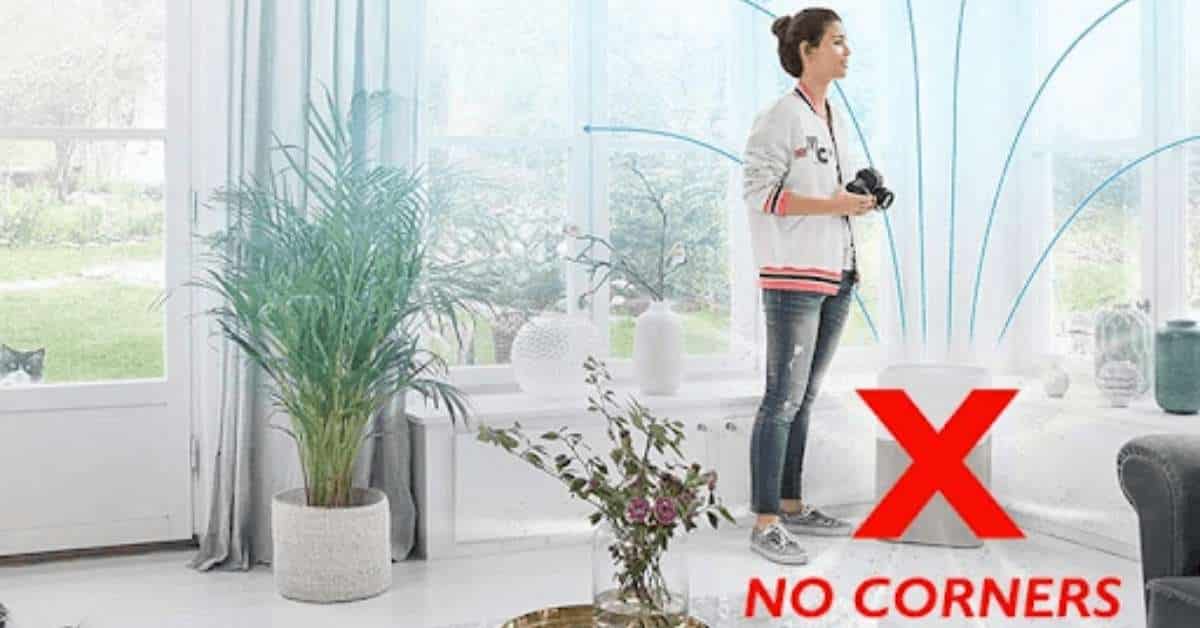
The reason for this is many air purifiers are designed with a front or side air intake, with the clean air dissipated at the top. If you obstruct the inlet or outlet by putting it near the wall, then it might have a hard time drawing dirty air from your environment.
The golden rule here is to ensure that there's enough space on all sides of your air purifier. Specifically, at least three to four feet of space should be given on each side so that the air purifier can absorb and distribute air efficiently. If you have a small room, you can put it at least 10 to 15 cm away from the wall or any object.
Remember that air purifiers work by taking in dusty and polluted air, cleaning it and releasing it. So the best place to put an air purifier is to where the pollution is mostly coming from. For example, near your doorway or in the direction of your window. You can also place quiet air purifiers in your bedroom to help you better sleep at night.
#2. ‘Should I sleep with an air purifier on?’ - Yes, Always Keep it ON!
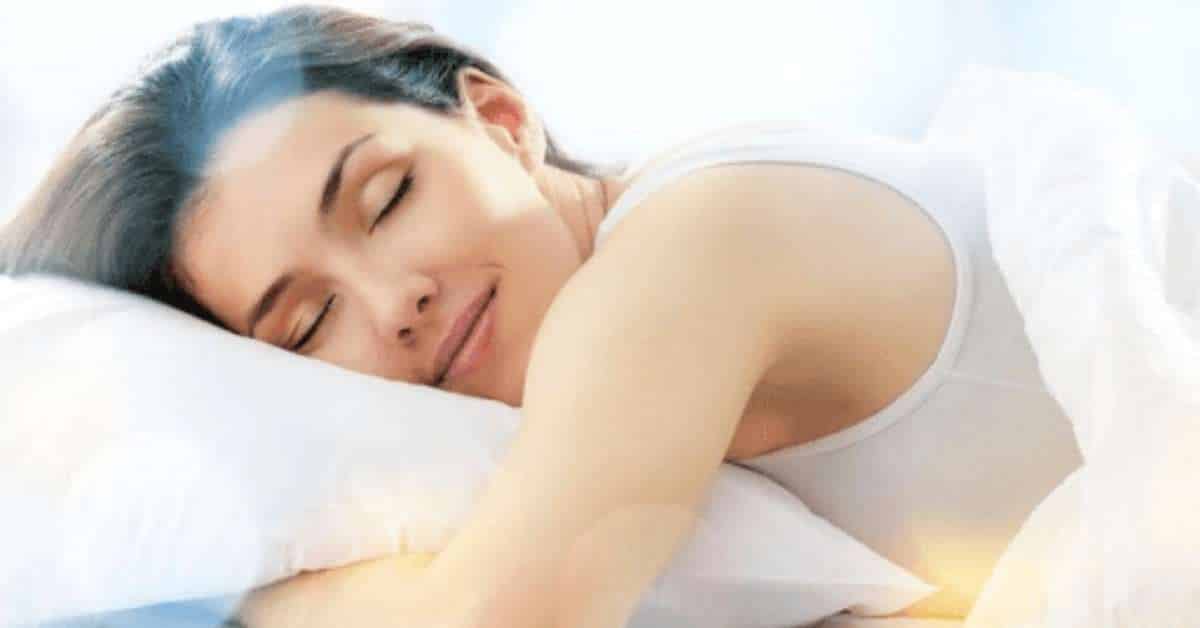
Air purifiers are designed to keep the airborne pollutants out from the air you breathe. Hence, it is just necessary that you keep it running. If you have residents in your home who suffer from respiratory illnesses, such as allergies and asthma, an air purifier should be in service non-stop. You probably want to save on your monthly bills by turning off your air purifier once in a while, especially when you’re sleeping. Don't worry about your power bills. Most air purifiers today are energy-efficient. They no longer consume excessive amounts of electricity if you don't turn them off.
Related Article:
How Long Should You Run Your Air Purifier
#3. ‘Should I leave my air purifier on when I'm not home?’ - Don’t turn it off!
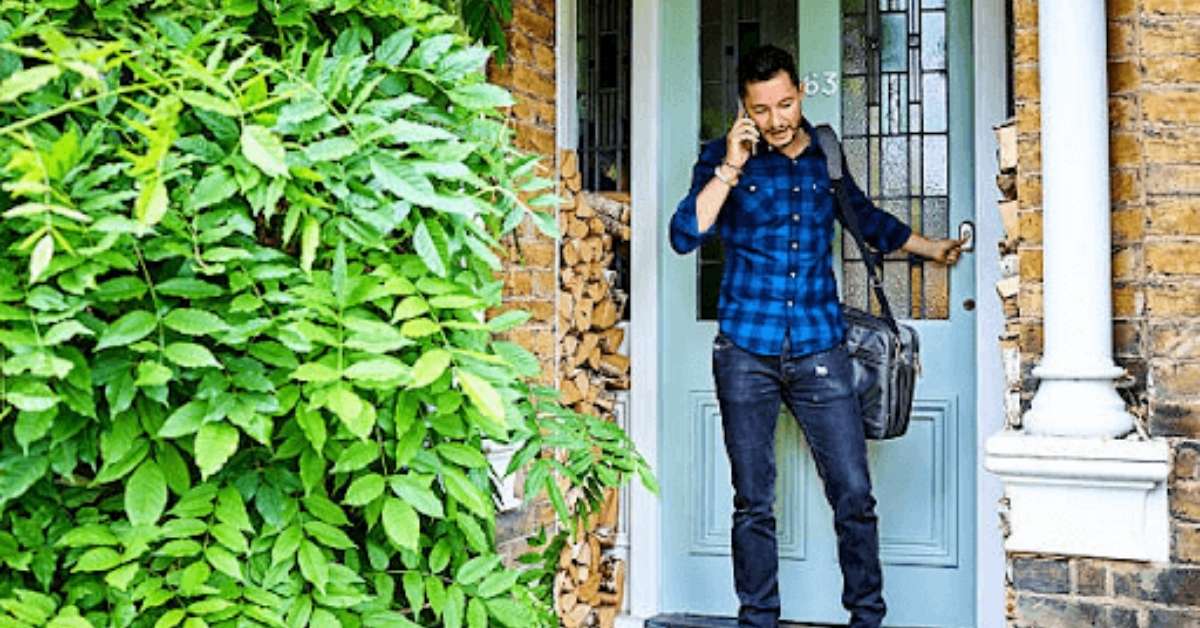
To save up energy, you can run it at lower speeds, especially if you’re not home. Leaving it on will prevent particulates, gases and viruses from circulating your place, even if you’re out at work.
Air purifiers nowadays are energy-efficient anyway, so it won’t create much of a stress when it comes to electric consumption.
There are also air purifiers which can run in auto-mode and can automatically run at a higher speed whenever it detects an increased amount of contaminants in the air. This will monitor your air quality for you and will automatically consume less power when the air is clean.
#4. ‘Can I Use an Air Purifier with Windows Open?’ - 30% More Filtration Efficiency at Closed Windows
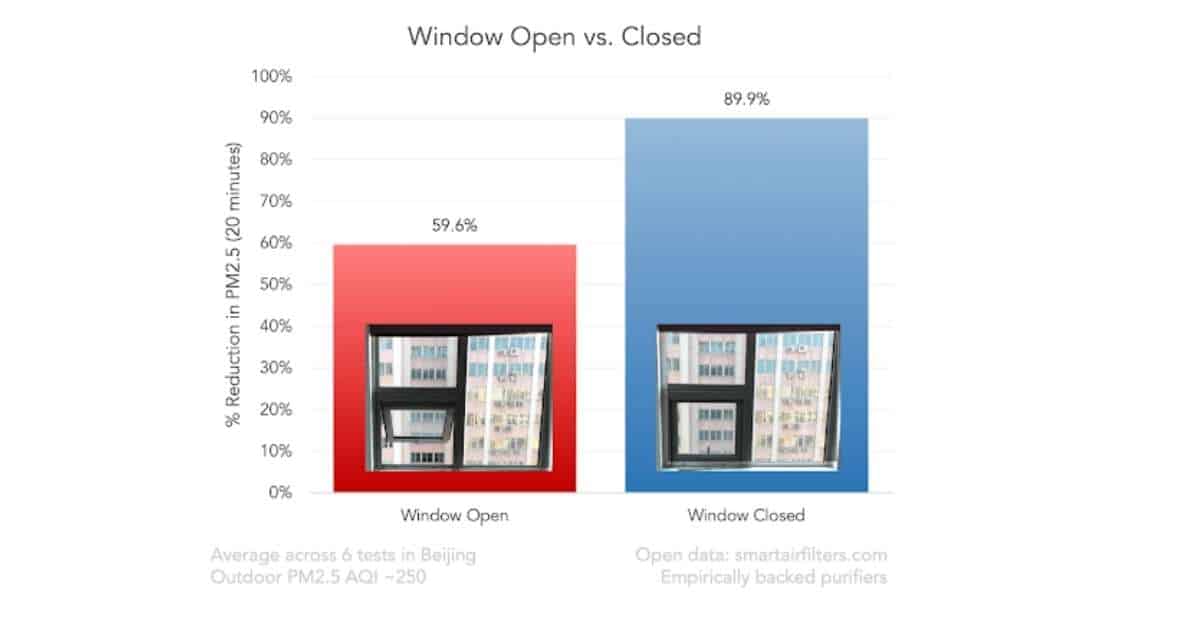
According to a study conducted by Smart Air Filters, you can reduce pollution levels up to 60% even if you have open windows. But a room with closed windows can even filter 90% of contaminants. This makes about a 30% difference in the number of contaminants filtered. It is obvious that air purifiers work better if there are no external forces involved. This means that you need to close your windows and doors at all times. If you open the windows, it is likely that the purified air will escape from your house. At the same time, it also invites outdoor pollutants to come in.
Most air purifier manufacturers suggest it’s better to keep windows closed while running your machine. Air purifiers work best when they are in enclosed spaces. You are still free to open your windows in certain parts of the day for regular ventilation. But during these periods, you may opt not to use your air purifier. An air purifier is not designed to clean all the outdoor air similar to an air conditioning system. Hence, to get the most out of your air purifier, do not open your windows all the time.
#5. “How Often Should Filters be Changed?” - 12 Months Tops

Another essential rule that you should follow religiously is the changing of the air purifier's filters. All air purifiers have filters that capture the contaminants present in the air. Every day, they gradually accumulate various impurities. Since they don't have self-cleaning mechanisms, there would come a time when they can no longer trap contaminants. Air purifier manufacturers recommend that you should change the filters every three months. But depending on the severity of the indoor air pollution problem, you might need to change the filters more frequently. A simple guide is as follows:
- HEPA Filters: 12 to 18 months replacement
- Activated Carbon Filters: 3 to 6 months replacement
- Pre-Filters: Clean every 30 days and replace once worn out
- Permanent Filters: Cleaned every after 3 months, replace it when damaged.
Manufacturers require filter replacements every 3 to 12 months to fully optimize the machine’s life and avoid circulating polluted air. Not that this is a way for them to earn more for every filter replacements each year, but this is actually backed up by studies.
Through tests and extrapolation, Smart Filters found out that a large room air purifier HEPA filter with 130 sq. meter coverage can generally last 22 months. On the other hand, a HEPA filter used in a room of 85 sq. meter can exhaust its lifetime in about 13 months.
|
Room Size |
Lifespan |
|
85 sq. meter |
13 months (3,120 hours) |
| 130 sq. meter |
22 months (5,280 hours) |
To use your air purifier optimally, make sure to read your manufacturer’s guidelines in filter maintenance and how often you should replace it.
If you neglect replacement schedules, this will result in bacteria and dusts recirculating your indoor air environment.
#6. ‘Can You Use a Fan With an Air Purifier?’ - Yes, To Boost Circulation

Image Source: iStockphoto
Although air purifiers do their best at reaching air in every part of your room, it may not be able to cover far areas. This can be areas with partitions, large furnitures and behind cabinets. In order for air to move around from these places into your air purifier, you can use an extra fan.
If you originally have a fan in your home, move it in areas far from the air purifier’s reach. It will blow and move the air around towards your purifier, making sure no dirty air is ‘left unturned’.
Best Place to Put an Air Purifier
Where to place an air purifier for it to run effectively?
This is a common question asked by first-time air purifier owners. Of course, it is essential that we can give light to this matter. The placement of the air purifier affects its performance. If you place it incorrectly, its efficiency would be reduced by as much as 50 percent.
Place it Near the Source
Air purifiers should be present in the most polluted parts of your home. It could deal with the pollutants faster if it's within their proximity. For instance, you can place them near basements and bathrooms since molds tend to grow in those areas.
Of course, it is difficult to identify which part of your home has a high concentration of airborne impurities. If the air purifier has an air quality sensor, then you will no longer have to do any guessing game. But if it doesn't, then you simply have to use your senses.
For example, if you suffer from allergic reactions when you are in your living room, there's a good chance that there are pollutants in that area.
In an Elevated Position
You may also want to consider putting an air purifier in an elevated position. There's nothing wrong if you just place the air purifier on the floor, as it can already do its job efficiently.
However, if you want the air purifier to capture both the horizontal and vertical air movement, then it should be placed in an elevated position. A wall-mounted air purifier, such as the HisoAir HA-W400 , will give you an easier time. Simply install it, and it will already absorb as many contaminants floating in the ground and ceiling.
If you don't want to install a wall-mounted air purifier, you can try some easy alternatives. Pick a lightweight air purifier , then place it on a desk, table, or any platform that puts it off from the ground.
In an Open Space
As much as possible, you need to free up as much space for your air purifier. After all, an air purifier is designed to absorb and distribute air. In an open space, the air purifier would be able to do these things without obstructions.
If you put the air purifier near a large piece of furniture, it will never be able to do a thorough air purification. In fact, it would be best if the air purifier is in the central part of your home, with unimpeded space around it . In that way, the air purifier will be able to process the existing airborne contaminants in your home.
Recommended Air Purifiers for Various Rooms and Settings
Here's a quick rundown of the ideal air purifiers that you can use for your rooms, homes, and other living spaces. Better check them out!
Bottom Line
To maximize the performance and use of your newly-bought air purifier, you need to follow certain precautions such as:
- Choosing the best location to put it.
- Always keeping it on, even if your asleep
- Never turning it off when you’re not home
- Keeping your windows and doors shut
- Changing your filters regularly
- Using a fan to boost circulation
When it comes to air purifiers, HisoAir is one of the world's leading brands that you should trust. We are an air purifier manufacturer that specializes in the production of medical-grade air purifiers for residential, and commercial applications. Read more on HisoAir and learn about our provisions, or Contact us if you want to order in bulk or for private labeling services.


